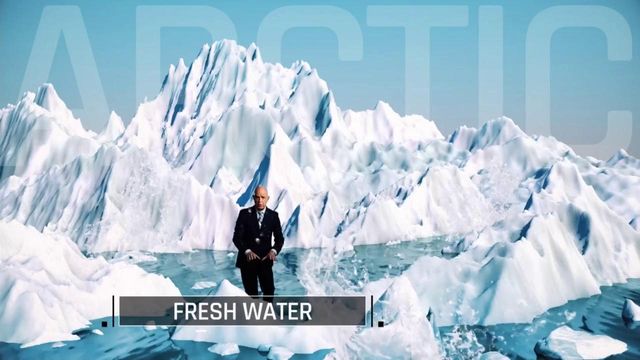Melting sea ice slows Atlantic Ocean currents; warmer water stays offshore to raise storm risk for the Carolinas
The Atlantic Ocean currents are slowing down, according to a new study led by a University of Maryland researcher.
Specifically, the study found the Atlantic Meridional Overturning Circulation (AMOC) current’s flow remained stable from 1955 to 1994.
However, in the mid-90s, the AMOC strength started to decline and the current began to move slower. Scientists attribute the change to the continued warming of the ocean’s surface and the accompanying changes in the salinity of its upper layers.
The currents are crucial players in shaping global weather patterns.
An ocean current is mostly about temperature and salinity. These factors change water density, which drives currents.
The Gulf Stream transports warm waters from the Gulf of Mexico up the East Coast, cooling and releasing heat into the atmosphere as it goes. Evaporation starts to take place and increases the water's salt concentration, making it denser and heavier, causing it to sink deeper into the ocean. The cold, dense water then flows south below the surface. Eventually, it resurfaces, warms up and completes the circulation cycle.
However, something is causing a disruption in this cycle. Melting sea ice in the Arctic is messing with the way the ocean currents behave.
The melting sea ice adds fresh water to the ocean surface and reduces the amount of salt in the water. The water becomes less dense and harder to sink.
When the surface waters can’t sink to deeper levels, the entire current slows down. When the Gulf Stream slows down, it can’t transport the warmer waters to the north as effectively. The warmer water starts to pile up along the east coast of the United States.
The actual depth of the Gulf Stream increases as the current slows down. And guess what that means?
The North Carolina coast would face a larger storm surge risk and tropical systems would have more fuel to work with. The flow has already been reduced by 15% in the last 50 years. Several studies have shown it hasn’t been this weak in more than 1,000 years.
What would happen if the Atlantic Ocean currents totally shut down? Could that lead to our next ice age?
This study didn’t take it that far, but the researchers did use model simulations to see what this might mean.
The simulations painted a chilling picture of a world transformed by the absence of the Gulf Stream and its crucial role in regulating global climate.
The entire Northern Hemisphere would turn much colder.
The Southern Hemisphere would warm dramatically as the transport of the warmer waters to the north would no longer happen. It would lead to dramatic climate changes across the entire globe. Winters would be harsher in the United States. Precipitation patterns would shift and most of the Northern Hemisphere would get less precipitation.
Ocean currents help maintain a delicate balance in global weather and climate. If they’re disrupted, it could make some places unlivable and threaten species’ survival.
To stop this, preserving Arctic ice is vital, which means helping slow climate change any way we can.










